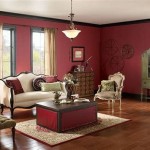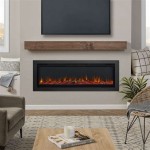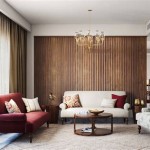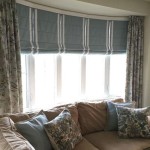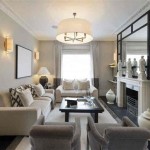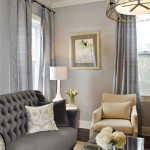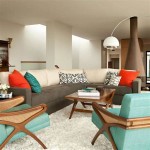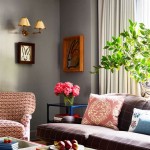Wall Paint Design Ideas For Living Room
The living room, often considered the heart of a home, serves as a central gathering space for family and friends. Its aesthetic appeal significantly influences the overall ambiance and reflects the homeowner's personal style. One of the most impactful elements in achieving a desired living room atmosphere is the wall paint design. Selecting the right wall paint involves considering various factors, including color palettes, textures, and application techniques. This article explores diverse wall paint design ideas for living rooms, aiming to provide comprehensive insights into creating visually appealing and comfortable spaces.
The choice of wall paint extends beyond mere aesthetics; it directly affects the perceived size, mood, and functionality of the living room. Lighter hues can create an illusion of spaciousness, making smaller rooms feel more open and airy. Conversely, darker shades can add warmth and create a cozy, intimate setting in larger living rooms. Furthermore, the color psychology associated with different hues can influence the emotional state of individuals occupying the space. Therefore, a thoughtful approach to wall paint selection is crucial for achieving a harmonious and functional living room environment.
Beyond solid colors, various painting techniques and design elements can enhance the visual interest of living room walls. Textured paint, accent walls, and strategic color blocking are just a few methods that can be employed to create a unique and personalized space. Integrating these elements requires careful planning and consideration of the room's existing features, such as furniture, lighting, and architectural details.
Understanding Color Psychology for Living Room Paint Selection
The impact of color on human emotions and behavior is a well-documented phenomenon. Understanding color psychology enables homeowners to select paint colors that align with their desired living room atmosphere. Different colors evoke distinct feelings and associations, which can significantly influence the overall ambiance of the space.
For instance, blue is often associated with calmness, tranquility, and serenity. It is a popular choice for living rooms aimed at promoting relaxation and reducing stress. Different shades of blue can evoke varying emotions; lighter blues tend to be more airy and refreshing, while darker blues can create a more sophisticated and contemplative atmosphere. Blue is often paired with neutral tones such as white or gray to create a balanced and harmonious color scheme.
Green is another versatile color that evokes feelings of nature, growth, and balance. It is often used to create a refreshing and inviting living room environment. Lighter shades of green can create a sense of openness and airiness, while deeper shades provide a more grounding and comforting feel. Green pairs well with natural materials such as wood and stone, enhancing the connection to the outdoors.
Yellow is associated with optimism, energy, and happiness. It can brighten up a living room and create a cheerful and welcoming atmosphere. However, it is important to use yellow sparingly, as excessive amounts can be overwhelming or even irritating to some individuals. Softer shades of yellow, such as pastel yellows or creamy hues, are often preferred for living rooms to avoid creating a visually jarring effect. Yellow can be combined with blue or gray to create a balanced and dynamic color scheme.
Red is a bold and stimulating color that evokes feelings of passion, energy, and excitement. While it can be used to create a dramatic and visually striking living room, it is generally recommended to use red as an accent color rather than the primary wall color. Red can be incorporated through accessories, artwork, or a single accent wall. When used sparingly, red can add warmth and character to a living room without overwhelming the space.
Neutral colors such as white, gray, beige, and cream offer a versatile and timeless foundation for living room design. They provide a blank canvas that allows other elements in the room, such as furniture and artwork, to take center stage. Neutral colors can also create a sense of spaciousness and airiness, making smaller living rooms feel larger. They can be combined with pops of color through accessories or accent walls to add visual interest and personality.
Exploring Different Painting Techniques for Enhanced Visual Appeal
Beyond selecting the right color, the application technique can significantly impact the overall look and feel of a living room. Various painting techniques can add texture, depth, and visual interest to walls, transforming a plain space into a dynamic and engaging environment.
Textured paint is a popular option for adding dimension and character to living room walls. It involves using specialized paints or application methods to create a tactile surface with a raised pattern or texture. Common types of textured paint include sand paint, stucco paint, and faux finish paint. Textured paint can conceal imperfections on walls and add a unique visual element to the space. However, it is important to consider the existing architectural style of the living room and choose a texture that complements the overall design.
Color washing is a technique that involves applying a thin, translucent layer of paint over a base coat to create a soft, textured effect. It is often used to mimic the look of aged plaster or Venetian plaster. Color washing can add depth and warmth to a living room and create a more relaxed and inviting atmosphere. The technique requires careful blending and layering of colors to achieve a subtle and natural-looking finish.
Ombre painting involves creating a gradual transition from one color to another, typically from a lighter shade at the top of the wall to a darker shade at the bottom. This technique can add a sense of height and depth to a living room and create a visually interesting focal point. Ombre painting requires careful planning and execution to achieve a smooth and seamless transition between colors. The colors chosen should complement each other and create a harmonious effect.
Stenciling is a technique that involves using a stencil to apply paint in a specific pattern or design. It can be used to create intricate designs, geometric patterns, or even replicate wallpaper. Stenciling is a versatile technique that can be adapted to various styles and preferences. It is important to choose a stencil design that complements the overall aesthetic of the living room and to use high-quality paint and tools for a professional-looking finish.
Stripes are a classic and versatile design element that can be used to add visual interest and dimension to living room walls. Vertical stripes can create the illusion of height, while horizontal stripes can make a room appear wider. Stripes can be painted in various colors and widths to create different effects. It is important to consider the proportions of the room and the existing furniture when choosing the width and spacing of the stripes.
Strategic Use of Accent Walls and Color Blocking
Accent walls and color blocking are effective techniques for creating visual interest and defining specific areas within a living room. An accent wall is a single wall painted in a different color or finish than the remaining walls in the room. Color blocking involves using different blocks of color to create a geometric or abstract design on the walls.
An accent wall can be used to highlight a particular architectural feature, such as a fireplace or a window. It can also be used to create a focal point in the room and draw the eye to a specific area. The color of the accent wall should complement the other colors in the room and create a sense of balance. Darker shades are often used for accent walls to create a sense of depth and drama. Brighter colors can be used to add a pop of energy and excitement.
Color blocking can be used to create a modern and contemporary look in a living room. It involves using different blocks of color to create a geometric or abstract design on the walls. The colors chosen should complement each other and create a sense of harmony. Color blocking can be used to define specific areas within the room, such as a reading nook or a entertainment center. It can also be used to create a visual statement and add personality to the space.
When using accent walls or color blocking, it is important to consider the proportions of the room and the placement of furniture. The accent wall should be strategically placed to maximize its impact and create a sense of balance. The colors chosen should complement the existing furniture and accessories in the room. It is also important to use high-quality paint and tools for a professional-looking finish.
Integrating these design elements requires careful consideration of the room's existing features, such as lighting, furniture, and architectural details. The selected colors and techniques should complement these elements and create a cohesive and harmonious design.
Ultimately, the selection of wall paint design for a living room is a highly personal decision that should reflect the homeowner's individual style and preferences. By understanding the principles of color psychology, exploring different painting techniques, and strategically utilizing accent walls and color blocking, individuals can create living rooms that are both visually appealing and emotionally resonant spaces.

7 Charming Wall Painting Ideas For Living Room Design Cafe

50 Beautiful Wall Painting Ideas And Designs For Living Room Bedroom Kitchen Color Paint

100 Wall Colour Combinations For Living Room Ideas Your Home Interiors Livspace

15 Living Room Wall Painting Ideas 2024 Paint Colors For

Interior With Geometric Art Living Room Wall Painting Paint Bedroom Designs

Fun Diy Wall Paint Ideas Berger Blog

7 Charming Wall Painting Ideas For Living Room Design Cafe

Gorgeous Living Room Paint Design Ideas For Your Home Asian Paints

15 Living Room Wall Painting Ideas 2024 Paint Colors For

10 Creative Wall Paint Ideas To Transform Your Space Nippon

